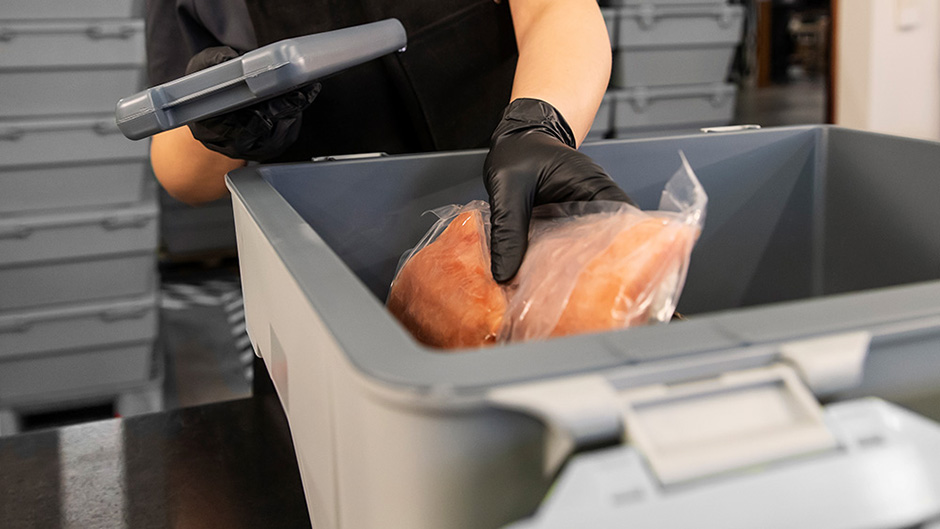How reusable cold shipping boxes help the planet breathe easier
Spawned by industrious British fishermen in the late 1790s using natural ice to preserve catches at sea so people could enjoy fresh meals at home, today’s cold chain is the continuation of similar goals, only on a much larger and more complex scale.
The intricate network that moves goods from farm to plate involves the conveyance of temperature sensitive products along a bustling cold chain supported by thermal and refrigerated packaging methods. It takes highly coordinated planning to protect the integrity of those shipments across short- and long-haul routes. And it requires plenty of transportation muscle in the form of refrigerated box trucks, ships, cargo planes and more.
All that freight activity accounts for about 6 percent of global greenhouse gas emissions. That number is poised to soar as we roll through the next several decades.
THE REFRIGERATED TRUCK CONUNDRUM
US grocery ecommerce is the fastest-growing product category online, and it’s estimated that US food and beverage ecommerce sales will grow roughly 23% in 2019 to $22.63 billion. As the demand for fresh foods trends skyward, the nation’s refrigerated transport fleet is expanding exponentially. This growing armada also represents a colossal mobile-polluter.
“Cold-chain trucks are some of the biggest on the road,” notes a recent article in Fast Company. “They consume fuel both in their engines and in their cooling systems, which are diesel-powered and tend not to be government-regulated. It’s estimated that cold trucks use 25% more fuel than normal trucks, and normal trucks have a high emissions profile to start with.”
Beyond burning tons of fuel, a truck’s diesel-powered refrigeration unit releases approximately 29 times the polluting particulate matter of the truck’s main engine.
COLD PACKAGING SOLUTIONS
Liviri Sprint containers — a portfolio of durable, insulated totes — help breathe sustainability into cold shipping boxes and cold-chain operations by minimizing a grocer’s reliance on refrigerated trucks. With up to 12 hours of trusted thermal performance, last-mile operators can now confidently deliver fresh foods to consumers’ doors, in any vehicle, without having to worry about it spoiling in transit.
Additionally, Liviri Sprint adds efficiency to the final leg of the cold chain. And advantages can be found along the daily route. Where in the past last-mile trucks and vans have sat in traffic and scoured for prime parking while returning to neighborhoods several times a day, Liviri Sprint ends the rigmarole by enabling unattended deliveries. This means less driving time, fewer stops, decreased emissions and, ultimately, a cleaner, greener last-mile journey.
It also means happier consumers. Fast Company notes that about 165 billion packages are shipped in the US each year, and much of that packaging eventually finds its way into our landfills and oceans. Reusable Liviri Sprint prioritizes a more sustainable closed loop system. The result is that consumers on the receiving side of the circuit have far less waste to contend with: no single-use plastic bags, no ice packs and Styrofoam to dispose, and a no-brainer box-return process that makes life easier.
CONCLUSIONS
The cold-chain frontier has expanded far, wide and fast since those ice toting fishermen mobilized their fresh catches more than two centuries ago. As we blueprint the coldscape of tomorrow, for billions of hungry, convenience loving consumers, our footprint on the planet remains a hot-button topic in need of similar foresight. Considering that grocery is now the fastest growing ecommerce category, we see real opportunities to accommodate expansion with the least amount of environmental impact.

